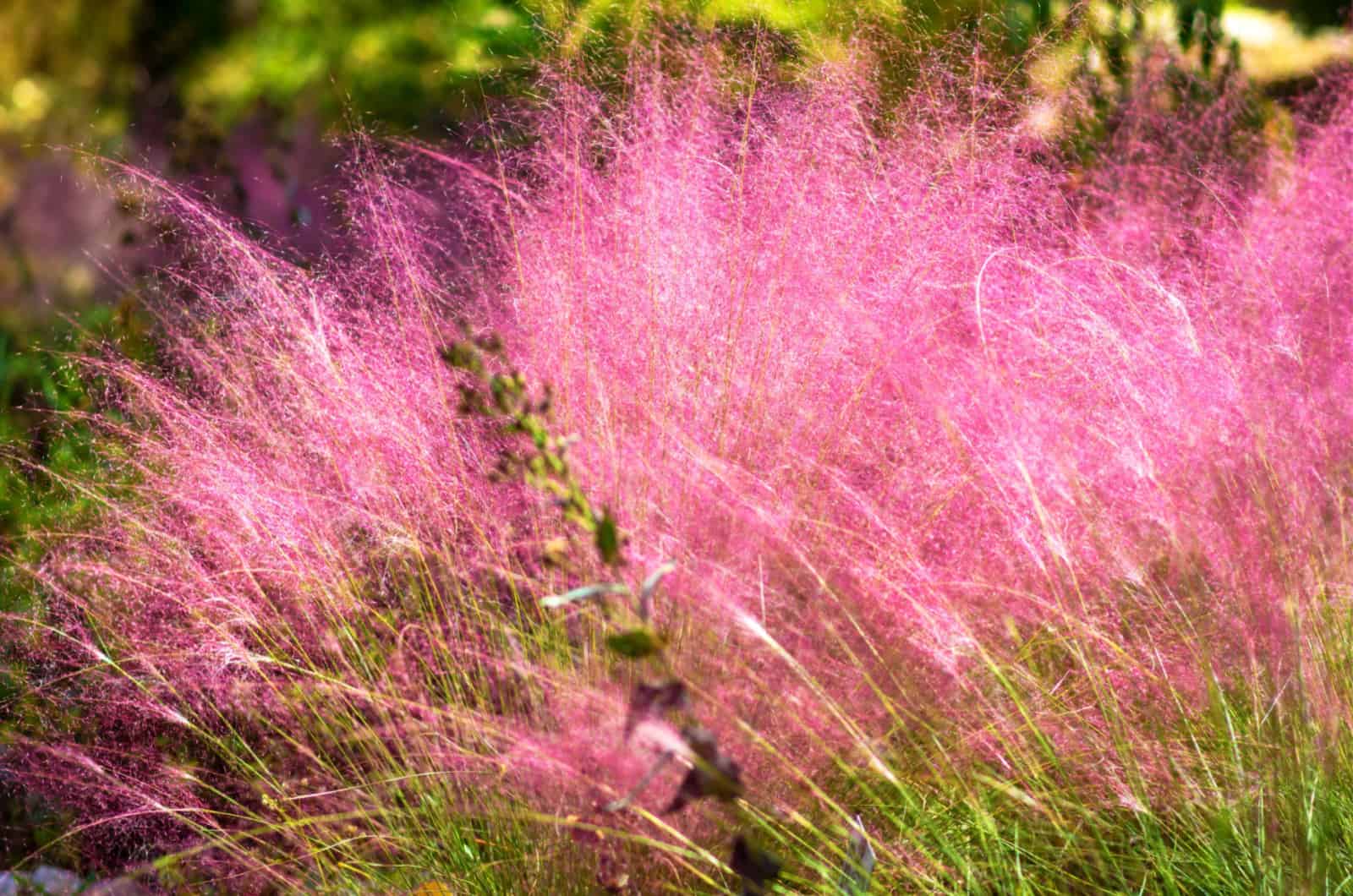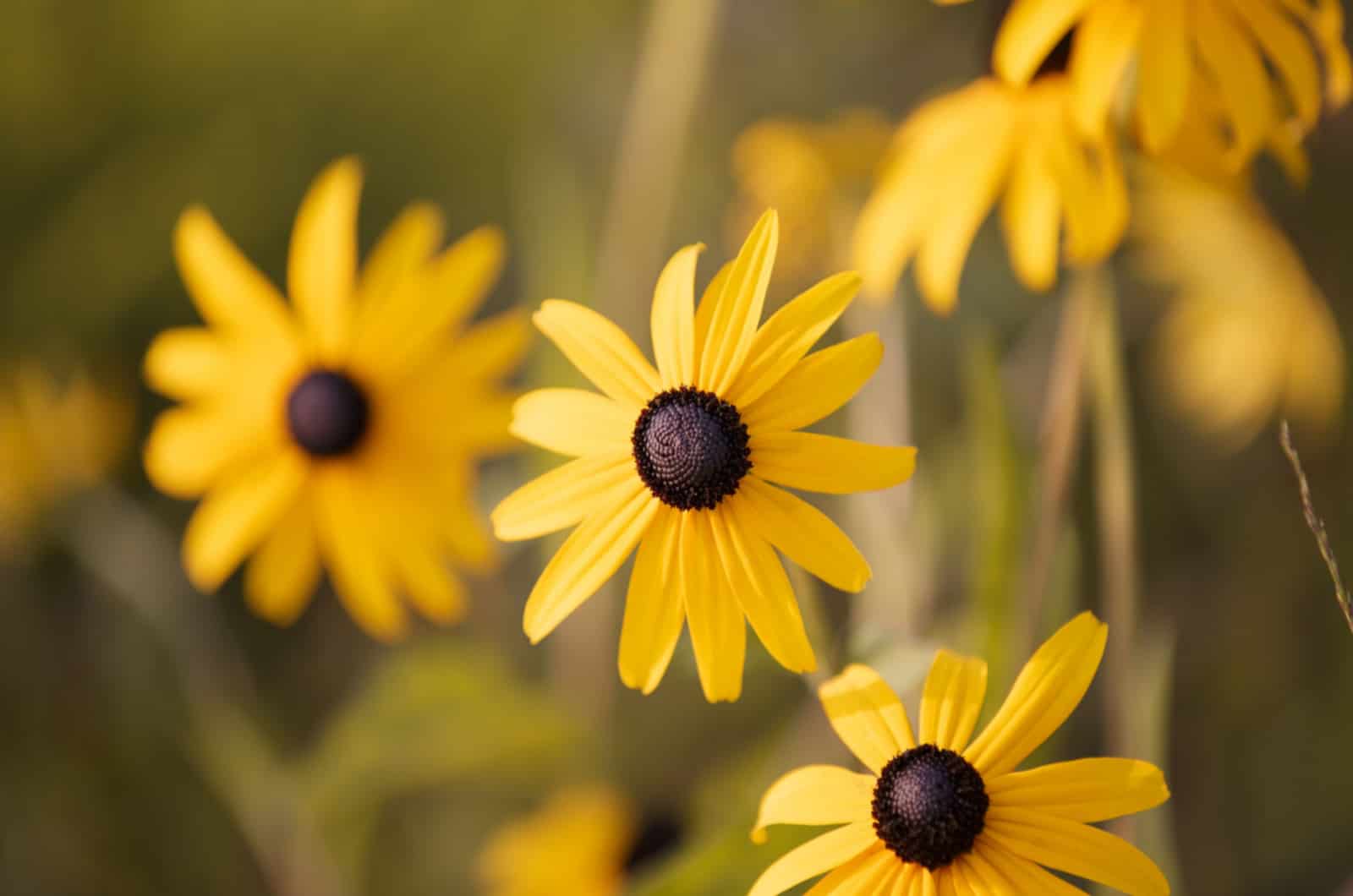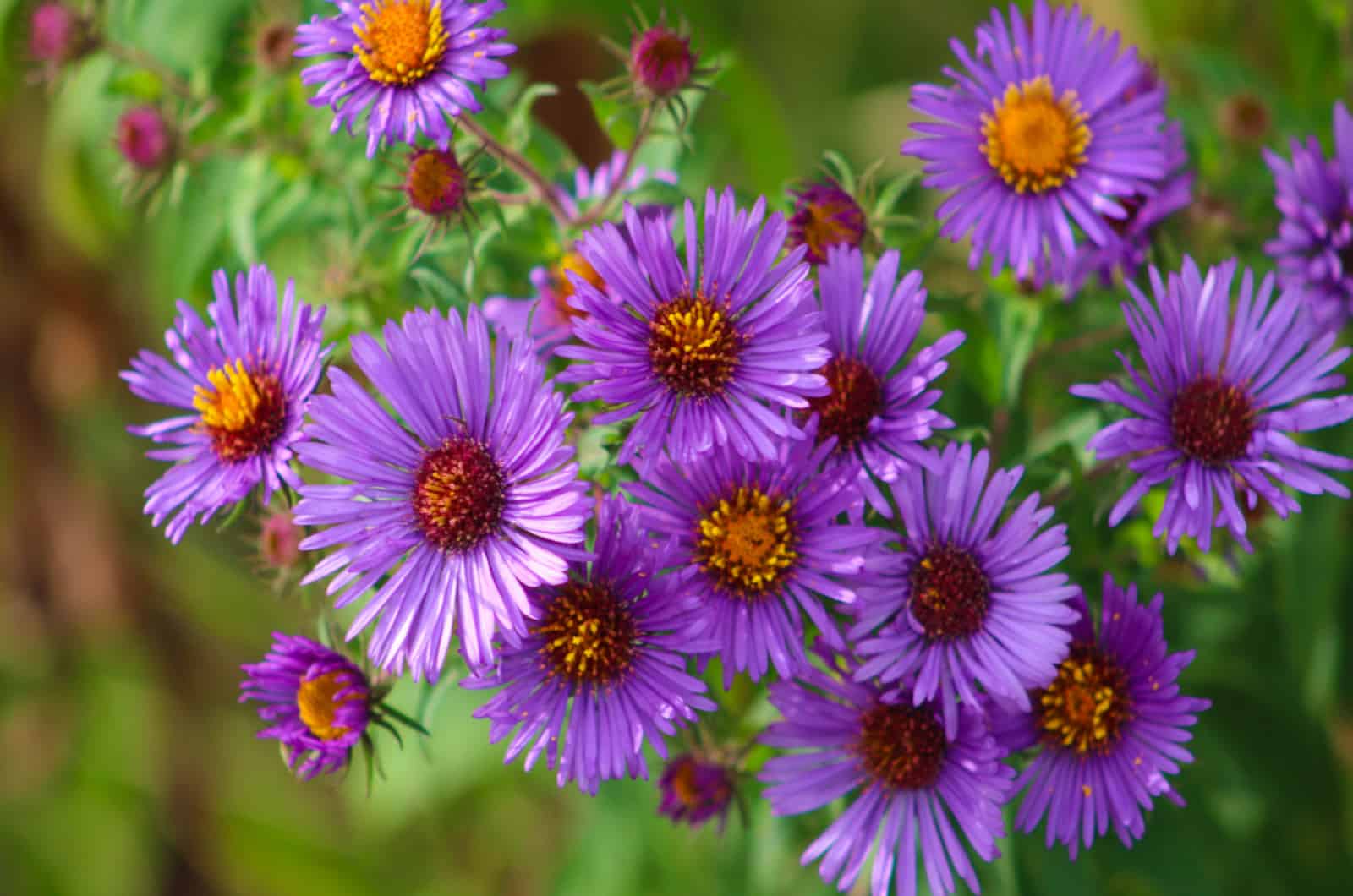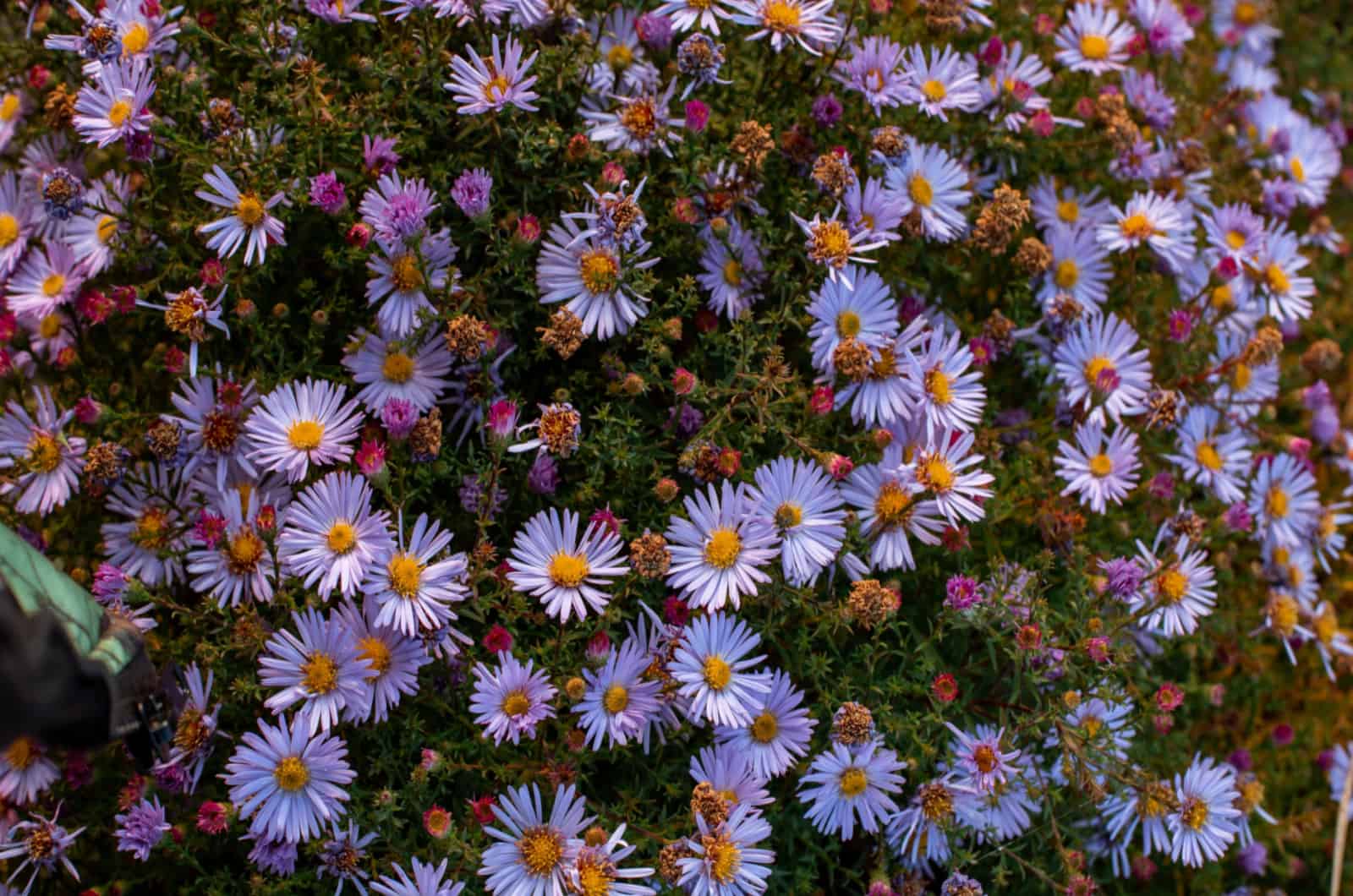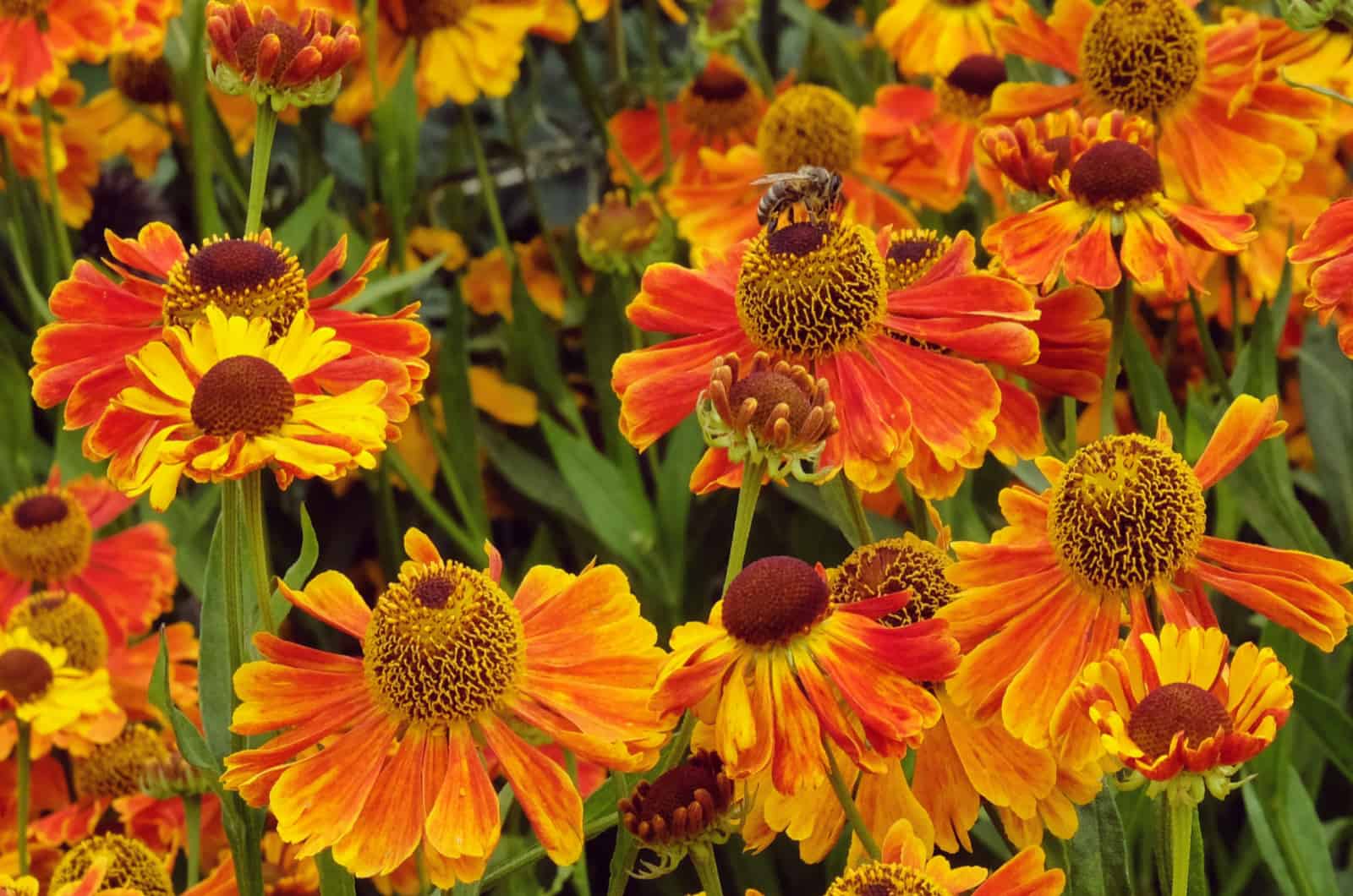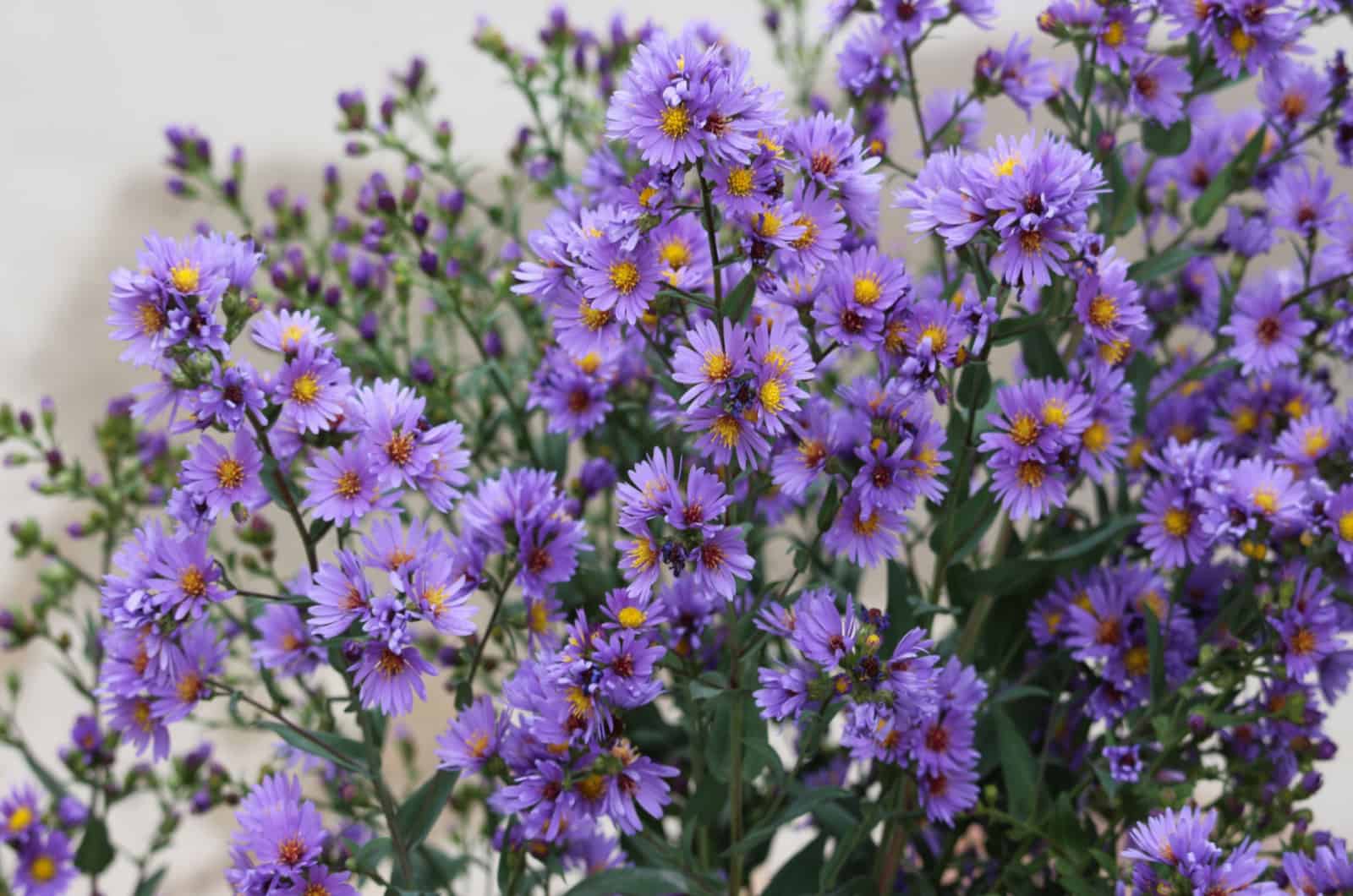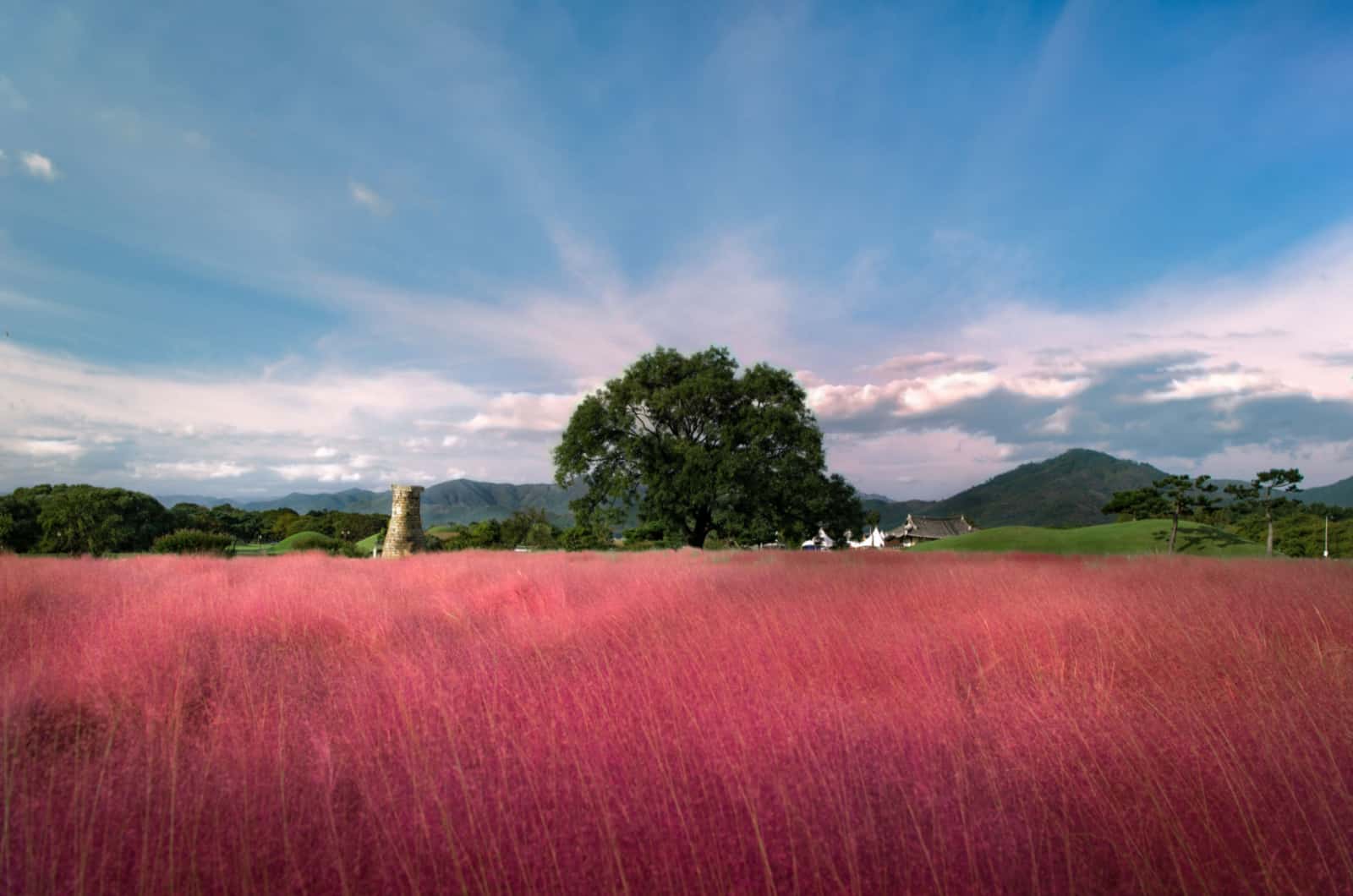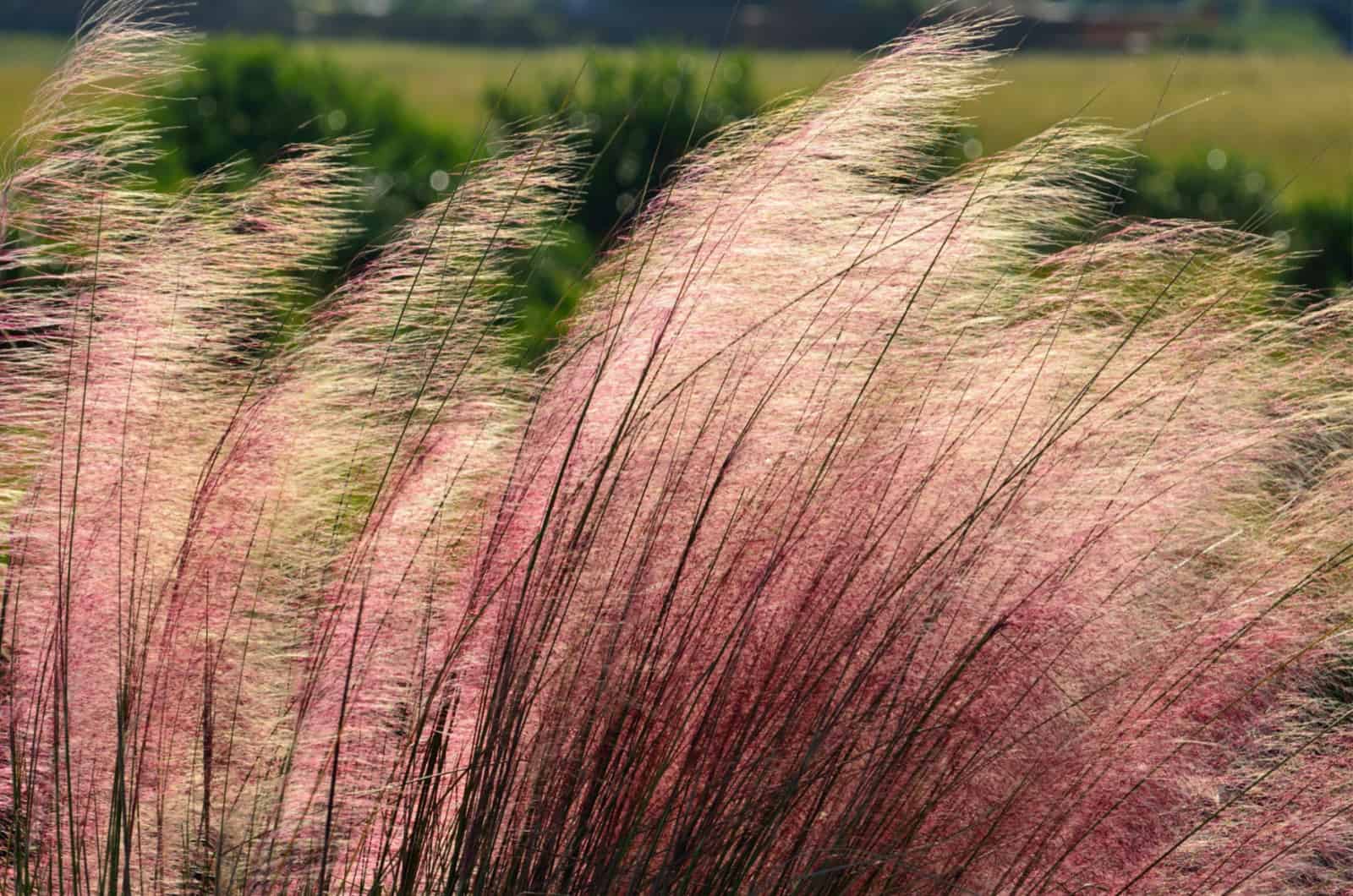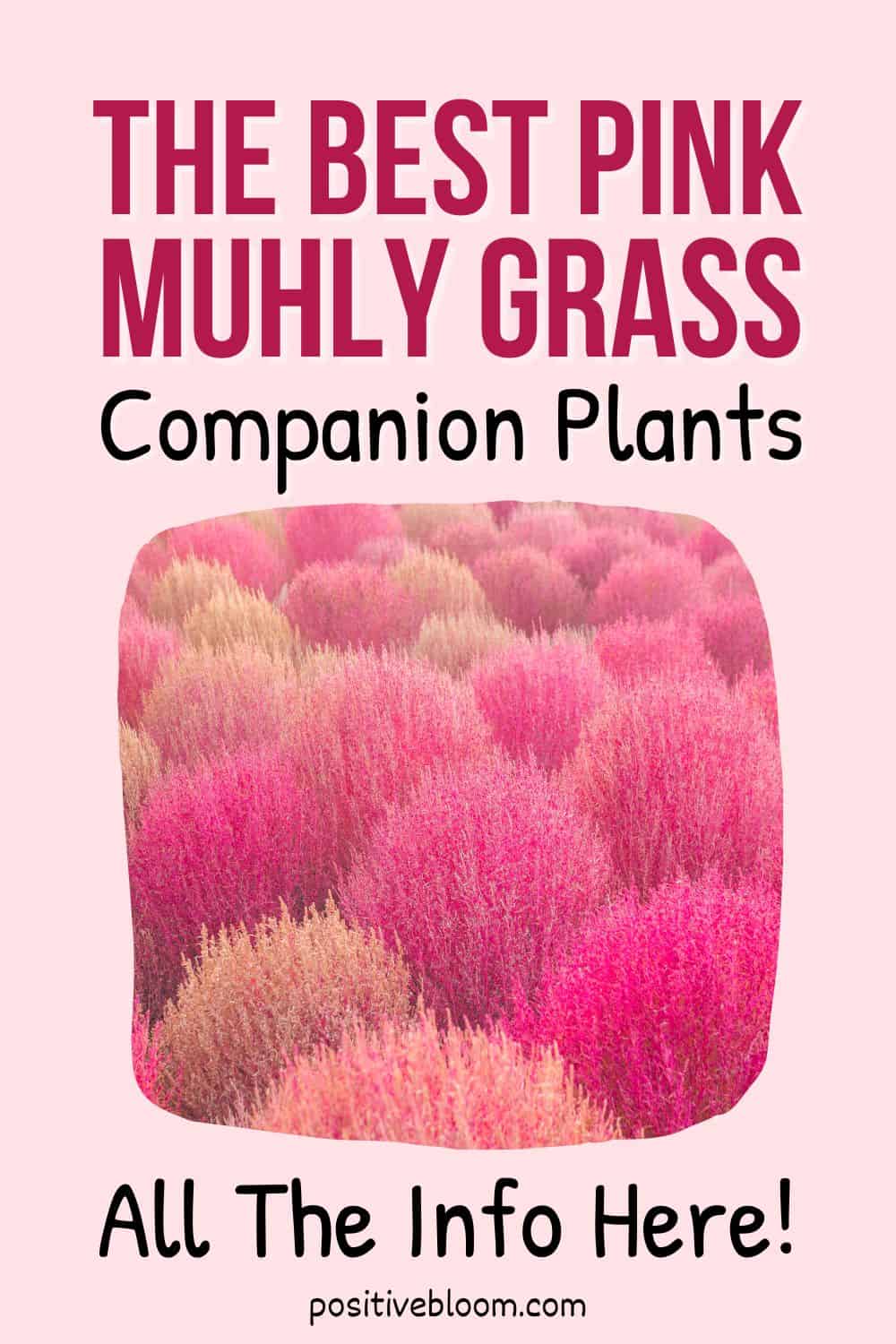If your goal is to grow a garden where heaven meets Barbie world, then Pink Muhly grass is definitely the right grass for you!
Pink Muhly grass, otherwise known as Muhlenbergia capillaris, is a perennial, warm-season grass type primarily used for ornamental purposes. This ornamental grass produces fluffy flowers that range from vibrant pink to red during the growing season.
These inflorescences grow in such a unique manner that it seems like there’s a pink cloud floating over your garden!
As time goes by, the vibrant color of these flowers starts to slowly fade away, however, the color and the entire scenario is still breathtaking, even with the faded flowers.
Another great thing about Pink Muhly grass is that it is low-maintenance, can adapt to various conditions, and is a great companion plant!
Read on to learn everything you need to know about Pink Muhly grass companion plants, including how to grow and take care of this cotton candy grass!
Pink Muhly Grass Companion Plant Options
Let’s start by saying that Pink Muhly grass is not as great a companion plant as Celosia or Salvia, however, there are still some plants that can benefit from growing alongside our pink princess.
Companion planting is a common practice, and it refers to the process of growing plants together to create a symbiotic relationship from which both plants benefit. For instance, one plant might need specific nutrients that the other does not require, or one plant might attract beneficial insects and pollinators to pollinate the flowers of the other plant — you get the gist.
As for our Pinky grass, there isn’t much to benefit from – aside from the fact that they are naturally deer resistant, there isn’t anything special to it. They provide no benefits and have no drawbacks.
However, some plants, such as Spotted Bee Balm and Perennial Black-eyed Susan, grow better when Pink Muhly grass is nearby.
Let’s look at some plants that might benefit from our Pink princess!
1. Perennial Black-eyed Susan
Pink Muhly grass and Black-eyed Susan are planted next to each other because they look absolutely amazing when grown together.
Black-eyed Susan, also known as Rudbeckia hirta, is a cheery annual flower that resembles a daisy. It pairs well with pink cotton candy blooms because of its yellow tint.
Black-eyed Susans are simple to grow, naturalize nicely, and only need to be deadheaded for upkeep. The plants stay in bloom longer if the faded blooms are regularly deadheaded.
You can leave the season’s final blooms on the plants to develop seed heads that will provide food for the birds all winter long. There will be a lot of self-seeding as well, which may not be a terrible thing.
2. Spotted Bee Balm
Spotted bee balm, otherwise known as Monarda punctata, is a herb plant that belongs to the mint family (Lamiaceae). It often grows in prairies, sandy areas, rocky forests, and coastal plains in full sun and dry soil.
This member of the mint family forms clumps and has branching or plain, square stems that can grow up to 1 to 2 feet, and occasionally 3 to 4 feet, in height.
Spotted Bee Balm is usually grown together with Pink Muhly grass because they are both low-maintenance plants that produce purple to pink flowers, which will make any garden look absolutely dreamy!
3. The New England Aster
Fall blooms that stand out include the New England aster, otherwise known as Symphyotrichum novae-angliae. The plants have upright stems that can reach heights of several feet tall. The stems contain several lance-shaped leaves sprouting from them, as well as fine “hairs,” or bristles.
The abundant daisy-like blooms develop in late summer to early fall. The flowers are approximately 1.5 inches in diameter, pinkish-purple in hue, and have centers that are yellow-orange.
These pinkish-purple flowers mix perfectly with our Pink Muhly grass, which is why they are usually grown together — especially if you want a colorful garden design!
4. Aromatic Aster
The Aromatic Aster produces purple-blue flowers that have yellow or orange centers. Not only do these plants produce beautiful flowers, but they also smell absolutely incredible, which is why they are often used in fragrances.
Aromatic aster, otherwise known as Symphyotrichum oblongifolium, is a perennial plant that produces rigid stems covered in short hairs. These plants grow 2 feet tall, and they have a bushy appearance that combines well with the cotton candy clouds produced by pink muhly grass.
5. Sneezeweed
If you’re thinking that this plant got its name because it induces sneezing in humans and animals… you are totally right!
There is an interesting story about how this plant got its name — their dried leaves were made into snuff and they were inhaled to induce sneezing to get rid of evil spirits from the body!
This tall perennial grows 2 to 5 feet tall, and has many elongated leaves and multiple flower heads. It has a winged stalk with yellow, daisy-like flower heads, and fan-shaped drooping rays, as well as disk flowers at the center of the head that make a noticeable, greenish-yellow, ball-like structure.
The blooms feature wedge-shaped golden petals that culminate in three fangs and elevated centers.
Plant Sneezeweed, Aromatic Aster, and Pink muhly grass all together to create a rainbow in your backyard!
6. Smooth Blue Aster
Smooth Blue Aster, also known as Symphyotrichum laeve, is a frost-hardy plant that keeps on blooming even in November!
These flowers are blue and lavender in color with a star-like shape. Later in the season the yellow flower’s center turns scarlet. This species differs from most asters in that its leaves are totally smooth.
Sky Blue Aster has rough leaves but a similar appearance. The sturdy stem lets it stand upright throughout the summer and fall. It grows approximately three feet tall and has arching branches.
The smooth Blue flowers combine with the pink and red flowers of pink muhly to create one aesthetically pleasing garden!
What Is Pink Muhly Grass?
As we already mentioned, Pink Muhly grass is a type of ornamental grass usually used for landscaping. It’s also low-maintenance, which makes it ideal for beginner gardeners that want to decorate their gardens.
Here is some general information about Pink Muhly grass:
[table id=223 /]
Even though Pink Muhly grass is low-maintenance, you still have to provide it with some plant care. Let’s look at some of the requirements for keeping these plants happy and healthy!
Pink Muhly Grass Care Guide
Drought tolerance and climate adaptations aren’t common features for all ornamental grasses — these types of grasses usually have special requirements, which is why they can’t be grown everywhere – especially in Florida, where the weather is crazy!
Read also: Grass Types In Florida: 7 Top Picks For Your Florida Lawn
Luckily our little Pink princess can grow in warm and dry climates, which is why it can be seen in Massachusetts, Kansas, Ohio, Texas, Mexico, and similar states.
Other than some occasional watering and pruning, there isn’t much else to add to the plant care guide, though Pink Muhly grass is also rarely susceptible to pests and diseases, and can flourish for the entire growing season!
Water Requirements
The water needs of this plant aren’t too complicated — once the Pink Muhly grass is established it requires minimal irrigation and can thrive in dry soil. This is because the roots of these plants are really deep, which enables it to thrive even in dry conditions.
The watering needs can easily be satisfied with usual rainfall, however, if you notice that the top 2 inches of the soil have become bone dry you should give the plant about an inch of water.
It’s also important that you provide them with proper soil and drainage, which we will discuss below.
Soil Requirements
These plants absolutely adore dry soil, which is quite unusual because most plants thrive in moist soil.
However, with our little pink princess it’s quite the opposite.
It’s important that you provide Pink Muhly grass with dry and well-draining soil (loam and sandy soil are the best) so those pretty fluffy flowers can thrive all summer. Avoid constant watering as it will make the soil wet, which will prevent this plant from reaching its full potential.
The pH of the soil doesn’t affect the growth much, though these plants prefer to grow in neutral to acidic soil. Therefore, soil with a high pH level could damage your plant.
Pink Muhly grass is also exceptionally tolerant to high salt concentration in the soil, so they are not the kind of plants that don’t like mushroom compost (and this stuff is good!).
If you are having issues with salt content in the soil, you don’t have to worry about it affecting Pink grass because they can grow in poor soil, heat, drought, salt… almost anywhere!
Temperature & Humidity Requirements
Pink Muhly grass grows best in warm and dry climates — USDA zones 6 to 9 are all fine. It is a native grass to Massachusetts but also grows well in hot climates where it returns each year and blesses us with its cotton candy inflorescences.
We mentioned that they love growing in high temperatures, however, it’s different when it comes to humidity. These plants don’t like high humidity levels and can often get various fungal diseases if grown in an area with high humidity.
They don’t like low temperatures either — Pink Muhly grass can tolerate temperatures as low as minus 10 degrees Fahrenheit, which doesn’t make it an ideal plant when the winter season comes. In that case, there are plenty of plants that can bloom until late winter!
Light Requirements
Pink Muhly grass grows best when exposed to direct sunlight!
Though this plant can grow in light shade as well, it requires direct sun for a couple of hours each day to thrive and grow.
Therefore, if your garden is fully exposed to the sun or has some shady areas, there’s no need to worry because Pink Muhly grass can stand it all!
Fertilizer Requirements
Surprisingly, ornamental grasses don’t have special fertilizer requirements. In fact, overfertilization can be a real issue because we often think that these plants need fertilizers to produce lovely flowers and green foliage when the opposite is true.
Even plants like pink muhly grass can suffer from too much nitrogen, which would cause the shoots to grow limp. You can perform a soil test to find out whether your soil’s nutrients need to be increased.
Pruning Requirements
Pruning is a crucial step in this plant care guide. As it is a fast-growing plant, you will have to prune it if you want the grass to look nice and tidy.
I would recommend you prune in early spring or late winter, and avoid cutting it back once the growing season begins. Don’t cut too close to the crown, and leave 3 or 4 inches for further growth and development.
It’s not recommended to prune the plant in mid or late summer as it can prevent the plant from producing the beautiful plumes of flowers characteristic of Pink Muhly grass.
Propagation
You can easily propagate Pink Muhly grass and make your entire garden look like it came straight out of a Barbie movie!
There are two methods for propagating Pink Muhly grass, including seed division or collection. You will notice that propagating this plant becomes necessary for keeping order and spacing between the plants after a while.
If you don’t provide them with enough space, they will spread and develop a dead clump in the center.
For successful propagation, follow the instructions below:
1. Get a shovel or spade for digging.
2. Dig deep enough so that the root ball is free.
3. Split the plant into two or three equal parts — you can use a chainsaw to divide a tangled root ball.
4. Put one part of the plant back into the original spot and plant the other parts somewhere new!
For clearer instructions, make sure to check out this video:
Common Problems
This plant is remarkably hardy — it can tolerate drought and full sun, and is resistant to various pests and diseases.
However, the pest that does attack Pink Muhly grass are mealybugs. If you notice that the plumes look white and frothy, you are probably dealing with a mealybug infestation.
To get rid of these annoyances, you can use pesticides or natural remedies like neem oil. Otherwise, wash these pests away with a hose.
Other issues this plant might run into are failed blooming due to lack of sun exposure, dehydration because of underwatering, or lack of air circulation because the plants are planted too close to each other.
Pink Muhly Grass Varieties
Pink Muhly grass is only one type of muhly grass, and there are plenty of hybrids and cultivars out there with even more mesmerizing colors.
Some of the most common Muhly grass varieties include:
• Pink Flamingo — a hybrid of Muhlenbergia lindheimeri and Pink Muhly grass that produces evergreen leaves and bright pink flowers.
• White Cloud — this type of grass produces numerous upright white flowers.
• Undaunted Ruby — this grass produces feathery red flowers and is native to Texas.
• Rose Muhly — this variety grows smaller than other Pink Muhly grass varieties and produces reddish-pink flowers.
• Regal Mist — this type of muhly grass grows about 4 feet tall and is one of the fastest growing varieties.
How To Use Pink Muhly Grass
Cotton candy Pink Muhly grass is a beautiful addition to any landscaping project!
This plant is incredibly aesthetic, and often used for decorating parks, gardens, fields, and so on. However, it can also be used for erosion control!
Surprising, right?
Let’s find out more!
Erosion Control
The act of preventing or regulating wind or water erosion in construction, agriculture, land development, coastal areas, and river banks is known as erosion control. Effective erosion controls deal with surface runoff and are crucial tools in stopping the loss of soil, water, wildlife habitat, and human property.
Because of its long and fibrous roots, Pink Muhly grass is able to help in erosion control, especially on the Southern-East coast of the United States. This plant can therefore be utilized to stabilize dunes and regulate stormwater.
Landscaping
We have already mentioned a couple of times that this plant is used for landscaping. You can dive right into mass planting of Gulf Muhly grass to make a statement, or you can grow it as a single plant.
If you are interested in growing Pink Muhly grass in your own garden, check out some of the options below:
• Rock gardens — Pink Muhly grass will definitely blend in perfectly with a rock garden to make it even prettier.
• Fountain — Just like Bluestem or Pennisetum grass, this Pink princess is also fountain grass! Just imagine those showy cotton candy panicles next to water splashes – trust me, this is like heaven.
• On the horizon — You can choose to plant this grass in the distance so that it serves as a border plant. The pink color will definitely stand out.
• Flower beds — Combining this grass with other ornamental grasses is like creating art in your own garden. You can mix whichever color you like – I usually mix Sunflowers and Pink Muhly grass, they look absolutely stunning!
• Wildflower gard — If you have the opportunity to grow a wildflower garden, then Muhly grass types are simply a must-have. With their vibrant pink colors during summer through late fall, and their golden fall colors during the colder seasons, they will make a great addition to your garden!
Wildlife
Wildlife uses pink muhly grass in a variety of ways. Pink Muhly Grass can offer protection from predators to birds and small mammals, which is no wonder when they create such a huge cloud of inflorescences.
Pink Muhly Grass seeds are also consumed by tiny mammals and songbirds, so they provide food as well!
Frequently Asked Questions
1. What can I plant in my garden with Pink Muhly?
Pink Muhly is a companion plant used primarily for ornamental purposes. It fits perfectly with Aromatic Aster, New England Aster, Sneezeweed, Perennial Black-eyed Susan, and Smooth Blue Aster.
The majority of these companion plants produce purple to pink flowers that blend smoothly with the pink inflorescences produced by Pink Muhly grass to create a dreamy garden!
If you ever get bored with one type of grass, you can always switch grass and grow one of the other Pink Muhly varieties.
2. What is Muhly Grass used for?
Muhly grass is generally used in landscaping. It produces lovely pink flowers and is also low-maintenance, which makes the whole planning and decorating process a lot easier due to the lack of special requirements!
Additionally, Muhly grass can be used in erosion control and for wildlife — the seeds produced by this plant are often eaten by birds and their flourishing growth also creates a perfect hiding spot for many birds and small mammals.
3. Is Pink Muhly invasive?
Even though it is a fast-growing plant that is easily propagated, Pink Muhly grass is not invasive, so you can use it as a border plant (it’s deer resistant, which is also a bonus!).
To Sum Up
So, what do you think about Pink Muhly grass now?
I think it is a great plant, primarily because it doesn’t have any special needs and can grow in full sun perfectly well. In addition to this, it is drought-tolerant, salt tolerant, and can be used in erosion control!
But let’s not forget the most important thing — Pink Muhly grass is astonishingly beautiful and able to create heaven in any type of garden. When it comes to Pink Muhly grass companion plants, it might not be as beneficial as coneflower, but it combines flawlessly with other ornamental grasses.
If your goal is to have the prettiest garden ever, then definitely consider planting Pink Muhly grass!
Until next time!
Like this post? Share or pin it for later!

